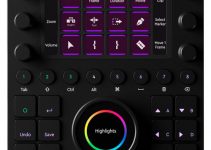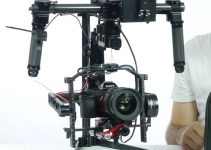This is still a relevant question for many Sony A7S II shooters who are trying to find a workaround and deal with this extremely annoying issue, that unfortunately, as it turns out on various occasions, still does exist. To find the answers Max Yuryev is here with another insightful video where he puts not one but two Sony A7S II cameras to the test to figure out when the overheating becomes a threat.
According to multiple resources, the sibling Sony A7R II also suffers from severe overheating when continuously recording 4K video internally for more than 15 to 20 minutes. Considering the fact that the A7S II is optimised for video shooting in the first place, there should be some improvements on that side. But to what extent? Without further ado, let’s dip in the video below and get the answers.
Unlike the Sony A7R II, the A7S II seems to last for about 50 minutes when recording 4K video internally before it shuts down due to overheating. Right after Max got the first unit he commenced a continuous recording session and surprisingly enough he found out that the camera managed to reach successfully the first 30-minute mark when the recording was ceased due to the time limit restriction that is set by default.
After that, the videographer swapped the battery and hit the record button once again. This time, after another 20 minutes of continuous recording the camera shut down due to overheating. All in all, the result was much better in comparison to the A7R II, but unfortunately, the camera still had the issue. After conducting a few more tests, Max also concluded that the temperature of the room where the camera was tested also had a direct impact on the duration of the recording time.
Finally, Max also tested another A7S II to make sure that the overheating issue wasn’t just a part of the first unit he got. Unfortunately, the two A7S II cameras overheated almost at the same time providing again about 50 minutes of record time.
Max also points out that when you are swapping the batteries of the camera you are actually improving the record time with around 10-15 minutes on average, so if you plan to shoot an extensive interview or a longer take for your project and insist on recording 4K in-camera then you should definitely keep this conclusion in mind. The above results are almost identical to the ones that Erik Naso stumbled upon while doing his own testing some time ago.
Alternatively, you can always record the 4K signal out of the A7S II to an external recorder that should entirely eliminate both the overheating issue and the recording time limit restriction, especially if you need to shoot for a longer period of time under harsh conditions as it turns out that the heat is the Achilles’ heel of these otherwise extremely powerful compact cameras.
Ultimately, we can only hope that Sony will find a solution to this flaw in the next iterations of their successful Alpha series. For the moment, the above practices seem to be still a viable workaround. Kudos to Max for all the testing he did and the invaluable information he shared with the community!
[source: Max Yuryev]
B&H Order Links:
Sony Alpha a7S II Mirrorless Digital Camera (Body Only)
Disclaimer: As an Amazon Associate partner and participant in B&H and Adorama Affiliate programmes, we earn a small comission from each purchase made through the affiliate links listed above at no additional cost to you.





I will keep my GH4 for now, never had any issues like this on it. This make the post edition longer, because you can’t not record the entire time, wedding videos or long interviews….
Here’s a brainstorm… My bet is the card’s getting hot. Swap card out & continue shooting. No overheating with external recorder tells me the problem’s with heated card. (My DSLR shuts off when card heats up here in the Texas heat)
Try 1080 recording since all the problems present at 4K. No card heat sink to disperse the heat when buried inside the body. (If I’m correct, everyone experiencing shutdown gets to buy me a beer for solving this.) I’ll test this myself as I’m soooooooo close to buying one.
I doubt this is the issue though it may help some. These are computers, they dissipate a lot more heat when recording (internally) than they do when idle (or recording to an external device). They dissipate more heat when recording 4K than 1080.
And he tested those Sony’s in the room temperature, how about outside over 30+ degrees Celsius. Some people say the A7RII overheated in ~ 5 minutes when shooting in a warm sunny day. 🙁
I feel so lucky I don’t run into those problems with GH4, hopefully also not in the next GH cameras.
We’ve filmed with both these cameras since their release, and we often do long-format recording of more than an hour at a time. Neither one has ever overheated in real-world usage.
We did deliberately make the a7R II overheat fail by keeping it in a warm room with no circulation AND keeping the tilt screen closed. We weren’t able to make the a7S II overheat even in those conditions.
With that said, we’re in New England and I don’t think we’ve filmed with them in over 80 F. Either way, I think the real-world impact of the overheating issues are WAY overblown. But keep that tilt screen open!
I’ve been using my A7RII as a B-camera on sticks rolling for hours (re-rolling at 30min) on 128GB cards and never had any overheating issues. Maybe different units have different susceptibilities depending on the quality of the sensor/processors and the quality of the thermal paste/heatsink applications etc like computers do?
Has somebody made a test cooling down the camera with aethylchlorid spray, which is used for freezing the skin for small operations ?
Isn’t it because of the 5-axis stabilization? Since the sensor is essentially “floating” because of this, you can’t just attach a heatsink or any cooling pipes to the sensor to remove the heat effectively.
Opening the LCD at least allow outside air to absorb some heat from the sensor.